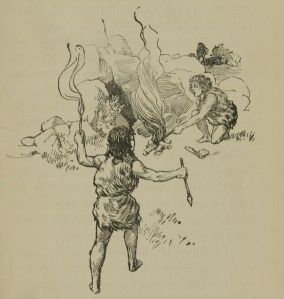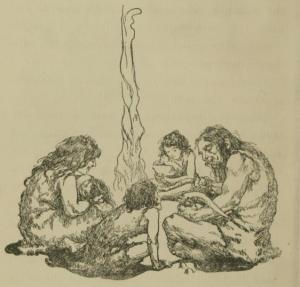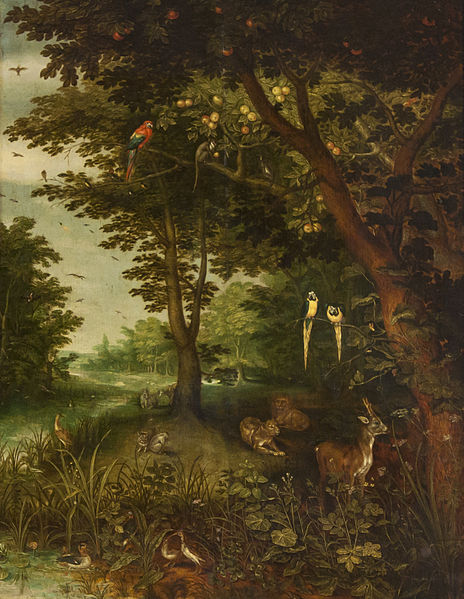When I was growing up we were taught humans were at the top of every chart, far superior to all other living beings. Our textbooks, illustrated with stereotypical images of “cave men,” proved the assertion with a long list of what our species could do that others could not. The list was so smug that I was a bit embarrassed on behalf of my fellow homo sapiens. A skeptic even then, I thought the list was somewhat prejudicial. Worse, it didn’t acknowledge what feels obvious to young children, that we are all things and all things are us.
I don’t for a moment dismiss our many human accomplishments—among them language, science, the arts, and shared rules meant to advance mutual compassion. I simply mean to point out that we’re not better, we’re different.
Besides, what I was taught as a kid doesn’t really hold up. Here are some reasons why.
Tool use was a biggie on that list. It’s true, animals haven’t developed the smart phone (thus are spared walking into traffic while texting) but they naturally incorporate tool use when it makes sense for them.
- Crows make tools like hooks and rakes out of twigs, leaves, even their own feathers to obtain items just out of reach and can use three tools in sequence. They also will drop pebbles into a container in order to raise the level of water, understanding cause and effect as well as a seven to 10-year-old child. Other examples of tool use by crows? They’re known to drop nuts on a roadway so cars will crack the shells, then wait for a break in traffic to retrieve the nutmeat. Interestingly, they’re more proficient when they grow up watching adult crows fashion tools. (Crows might wonder why we segregate human kids away from the interesting work-a-day world of adults.)
- Naked mole rats dig with their teeth, but to keep from inhaling dust and dirt they’re known to position wood shavings in their mouths as rudimentary face masks.
- The octopus is more closely related to clams than to people, yet these invertebrates plan ahead, tool-wise. For example they’ve been seen carrying coconut shell halves they can hide under later in order to grab unsuspecting prey as it passes.
- Orangutans fold leaves into a usable “musical instrument” that modifies their calls, making them sound lower and therefore more threatening to large predators.
Math was another obvious difference. We were taught that numerical sense is evidence of higher order thinking. Yet the animal kingdom uses math when necessary.
- Bears can count. Although they don’t benefit from the intelligence-boosting effect of living in social groups, research shows bears can estimate quantities just as well as primates. One particular study taught bears to discriminate between dots on a touchscreen computer, a situation about as far removed from relevant bear smarts as possible. Their abilities in natural habitat are likely to be far more impressive.
- Elephants have substantial numerical skills, outperforming primates and even human children when tested for their ability to find the difference between two quantities. A study found elephants can discriminate between one and two as well as between larger numbers.
- Baby chicks can not only count, they can even can add up numbers based on groups of objects they can’t see at the moment. And that’s when they’re a few days old! By two weeks of age, chickens can take into account the sun’s height and position to navigate. Plus they’re able to draw inferences and plan ahead, for example choosing to delay gratification in order to reap a greater reward. And who’d have guessed, but chickens prefer to count from left to right.
- Pigeons are able to learn abstract rules about numbers and order pairs. Aside from humans, only rhesus monkeys have been able to perform at this level.
- Insects also use math. Honeybees can distinguish between and remember quantities up to four. They can also match patterns. Ants operate with a collective form of intelligence, able to use complex problem-solving strategies to optimize time and energy spent feeding the colony.
People, we were told, communicate in complex ways while animals are, well, just animals. Again, not true.
- Elephants communicate sophisticated ideas in a variety of ways including low-frequency sounds from 1 and 20 Hz that can travel over miles. So far, researchers have identified nearly 200 expressions and gestures, along with nearly 100 vocalizations. Elephants can recognize at least 100 other unseen elephants by voice alone. Their remarkable ability to understand communication isn’t limited to their own species. African elephants can differentiate between languages, gender, and age of human speakers.
- Dolphins remember one another, without contact, for at least 20 years. In fact, researchers have found that dolphins call each other by name (in this case, distinctive signature whistles).
- Koko, a western lowland gorilla, has been taught American Sign Language and, according to her trainer, understands about 1,000 signs along with nearly 2,000 words of spoken English. Sometimes, when there’s not a relevant sign, Koko invents her own signs. For example, she “compounded the sign for scratch with the sign for comb to mean, “brush” (scratch-comb).”
- Alex, an African gray parrot, learned well over 100 words that he used appropriately in unique contexts, demonstrating the intelligence of a five year old human child. He died suddenly in 2007. The last thing he said to his trainer upon going to his cage for the night was, “You be good, see you tomorrow. I love you.”
Which brings us to emotion and personality. Yup, non-human types are brimming with it.
- Chimps not only create social traditions, they’re interested in what’s trendy. Researchers are just now catching on (academic types are not known for fashion forwardness) to the latest thing, chimps wearing grass in their ears.
- Stressed-out honeybees show an increased expectation of bad outcomes. In other words, they become pessimists. The bees also showed altered levels of neurochemicals associated with depression. Other invertebrates, such as crayfish, can exhibit anxiety and respond well to medications that relieve anxiety in humans.
- Dogs traumatized by military service or abuse exhibit signs of canine Post Traumatic Stress Disorder
- Rats feel regret after making poor choices.
- Crows
will eat nearly anything, but prefer French fries from a McDonalds bag to the same fries in a plain brown sack.
They not only hold grudges against specific humans who have done them wrong, but will teach other crows to react badly upon seeing them as well.
- And play? There’s plenty of it. Crows like to ski down icy rooftops and snow-covered slopes holding sticks or boards in their talons. River otters, elephants, and whales are known for playful behavior.
Let me push it one step farther, to compassion and even spirituality. We’ve been told that only humans have evolved beyond survival-based selfishness to establish ethics and morality. We’ve been taught we’re the only species to perform rituals as we mourn the passing of our departed, the only ones to meditate in silence, the only ones to experience a sense of awe akin to reverence. Apparently not true either.
- Altruism? There’s plenty of evidence. A dolphin saving a beached whale and its calf. Gorillas working together to dismantle dangerous poachers’ traps. A pod of sperm whales adopting a disabled dolphin. Rats gnawing through cages to help other imprisoned rats. A bear assisting an injured crow. Lions chasing away an Ethiopian child’s kidnappers and guarding her until human help arrived.
- How about awe? Chimps are known to ritualistically dance at the advent of thunderstorms and dance at waterfalls. They’ve also been observed dancing (rather than fleeing instinctively) in the face of wild grass fires.
- Meditation? Baboons have been observed performing a sangha, sitting in silence for over a half hour gazing at a stream of water, even the juveniles remaining quiet.
- Love? Probably yes according to research with cats and dogs who seem to be tapping into
fields beyond our conscious awareness to know when their owners are coming home.
- Funerals, those too. Elephants weep in sorrow and grieve their dead. They’ve also been known to sense the death of humans important to them, even from great distances, as two tribes of African elephants did when they walked for hours to mourn at the home of a conservationist who’d once rescued them. Ritualized behavior to mourn death is common in animals including foxes, magpies, wolves, dolphins, and gorillas.
- Maybe even religion. Cetologist Hal Whitehead‘s research indicates that sperm whales not only transmit culture to their young, they may have have evolved a form of religion to make sense of their purpose.
Even these terribly incomplete examples have probably taxed your patience although there are thousands of other fascinating proofs out there. Let’s remember, all these observations are human-centric, further evidence that we judge animals against one species—-us.
We wouldn’t have particularly good scores if tested according to the abilities of our fellow creatures. It’s not as if we can age in reverse as a jellyfish named Turritopsis dohrnii does, possess a snake’s infrared vision able to assess the difference in temperature between moving prey and surrounding area on the scale of milliKelvins, emit a protein that neutralizes nearly every poison as an opossum does, regrow limbs and organs as the salamander can, or are able to hear as well as the wax moth Galleria mellonella which is capable of detecting frequencies of up to 300kHz, (we humans at best hear to about 20kHz).
According to evolutionary biologists, we humans aren’t better than animals, just different. Researchers in fields like comparative psychology and language study, say there’s an “emerging consensus among scientists that animals share functional parallels with humans’ conscious metacognition — that is, our ability to reflect on our own mental processes and guide and optimize them.”
As naturalist Henry Beston wrote in The Outermost House,
We need another and a wiser and perhaps a more mystical concept of animals. Remote from universal nature and living by complicated artifice, man in civilization surveys the creature through the glass of his knowledge and sees thereby a feather magnified and the whole image in distortion. We patronize them for their incompleteness, for their tragic fate for having taken form so far below ourselves. And therein do we err. For the animal shall not be measured by man. In a world older and more complete than ours, they move finished and complete, gifted with the extension of the senses we have lost or never attained, living by voices we shall never hear. They are not brethren, they are not underlings: they are other nations, caught with ourselves in the net of life and time, fellow prisoners of the splendour and travail of the earth.







